Van der Paele Madonna, Jan van Eyck's greatest work since the Gent Polyptych
The Madonna of Joris van der Paele is the greatest work by Jan van Eyck (Maaseik, c. 1390 Bruges, 1441) since the Polyptych of the Mystic Lamb. The work was made between 1434 and 1436 at the behest of Joris van der Paele (c. 1370-c. 1443), canon of the church of St. Donazian, then the main house of worship in Bruges: it was intended for a chapel founded by Van der Paele himself, who intended that, in the chapel itself, a mass should be celebrated every day (and forever), and that an additional memorial mass should be held on the anniversary of his death (Van der Paele had also provided the staff for the chapel).
 |
| Jan van Eyck, Madonna of Canon Van der Paele (1436; oil on panel, 122.1 x 157.8 cm; Bruges, Groeninge Museum) |
The painting depicts a complex theological structure based on different levels of interpretation and meaning. Formally, the composition resembles an epitaph: and indeed, both the painting and the legacy left by the chapel’s founder were intended to pass on his memory. The depiction shows the Madonna and Child in the center, seated on a high throne surmounted by a canopy. On the left we see Saint Donatian, who, as the titular saint of the collegiate church of Bruges, is placed in the most important hierarchical position, to the right of Mary. The saint, wearing a bishop’s mitre decorated with pearls, is clad in a brocade chasuble with gold embroidery forming figures, and he holds in his hands his iconographic attribute, the wheel with the five candles, as well as a magnificent reliquary that he holds in his left hand.
In front of him, to the left of the Virgin, we see the donor kneeling, and dressed in a white tunic, while on his left arm he wears a fur coat. In his hands he holds a prayer book, protected by a leather cloth. The glasses in his hand make it obvious that he has just finished lectio and is meditating on what he has read. Joris van der Paele is presented by St. George (his eponymous saint and patron saint), depicted in splendid golden armor, shining with the grace of the Virgin and Child. The saint, who bears on his chest the Hebrew-language inscription “Adonai” (“Lord”), removes his helmet in greeting and with his left hand points to the canon. Van Eyck, who modestly paints himself in the gleaming shield of St. George, takes some objects that were actually venerated in the Bruges collegiate church by integrating images of these precious relics into his composition. Indeed, the church possessed relics from the Holy Sepulchre in Jerusalem (which van Eyck evokes through the porphyry columns), a relic of the Cross, set in a crosier, a relic of St. George’s arm, evoked by his strange gesture of greeting, and again a chasuble kept in the church treasury was believed to be part of St. Donazian’s clothing.
It is clear that Jan van Eyck, with his Madonna of Joris van der Paele, created an arduous and exhausting work both artistically and in terms of content. We can only imagine that the painter not only wanted to satisfy his patron, but that he was also moved by ambition, since the panel was intended for the church that was also the parish of the Duke of Burgundy, and that he therefore also wanted to honor Duke Philip the Good with his work.
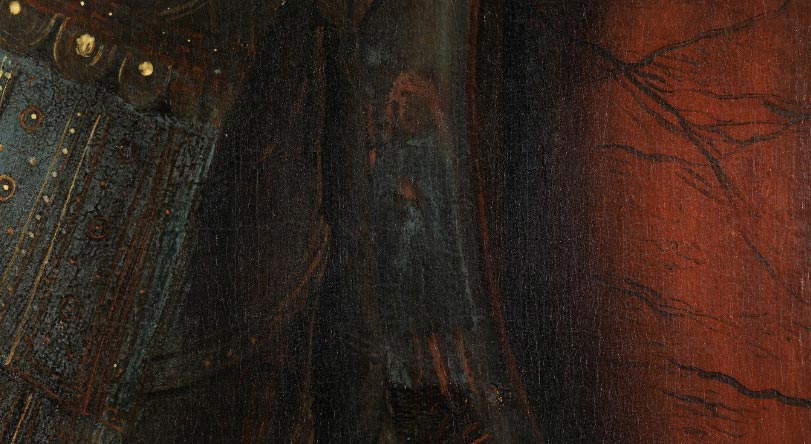 |
| Jan van Eyck, Madonna of Canon Van der Paele, detail with Jan van Eyck’s self-portrait |
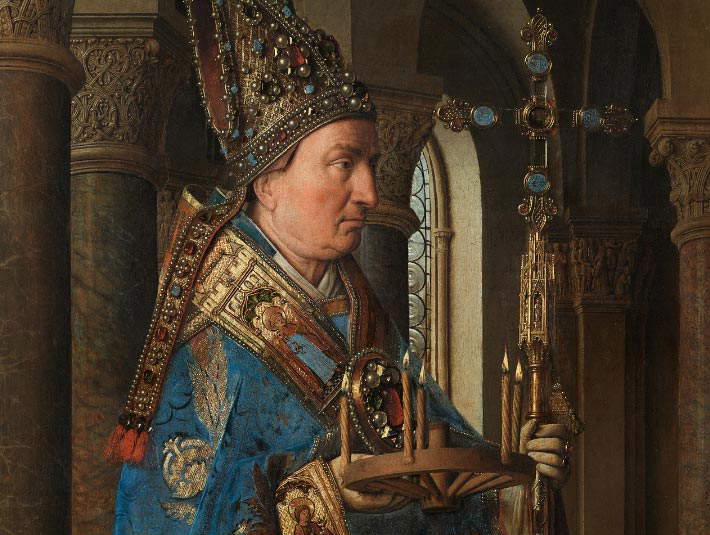 |
| Jan van Eyck, Madonna of Canon Van der Paele, detail with Saint Donatian |
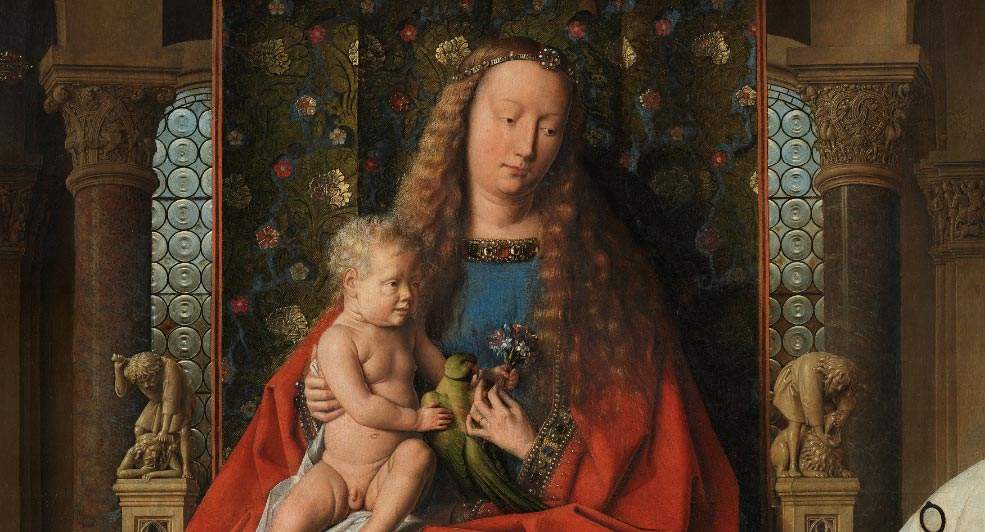 |
| Jan van Eyck, Madonna of Canon Van der Paele, detail with the Virgin and Child |
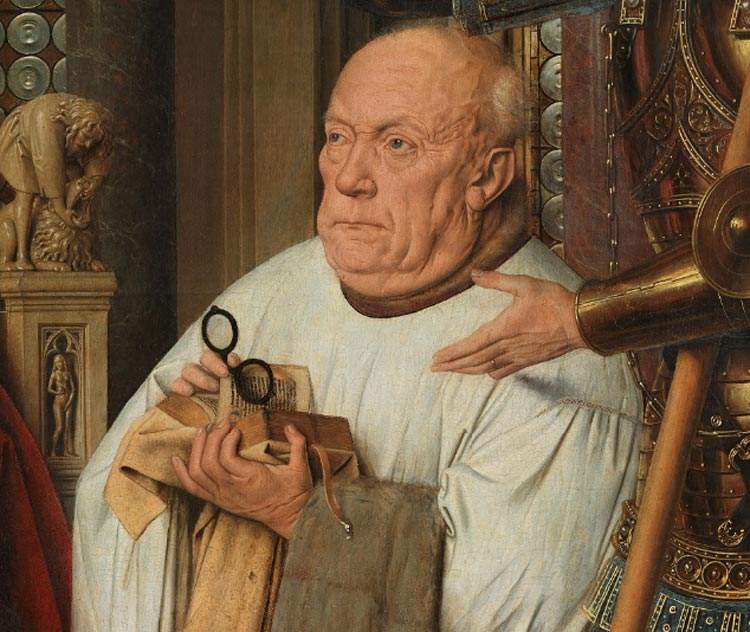 |
| Jan van Eyck, Madonna of Canon Van der Paele, detail with donor |
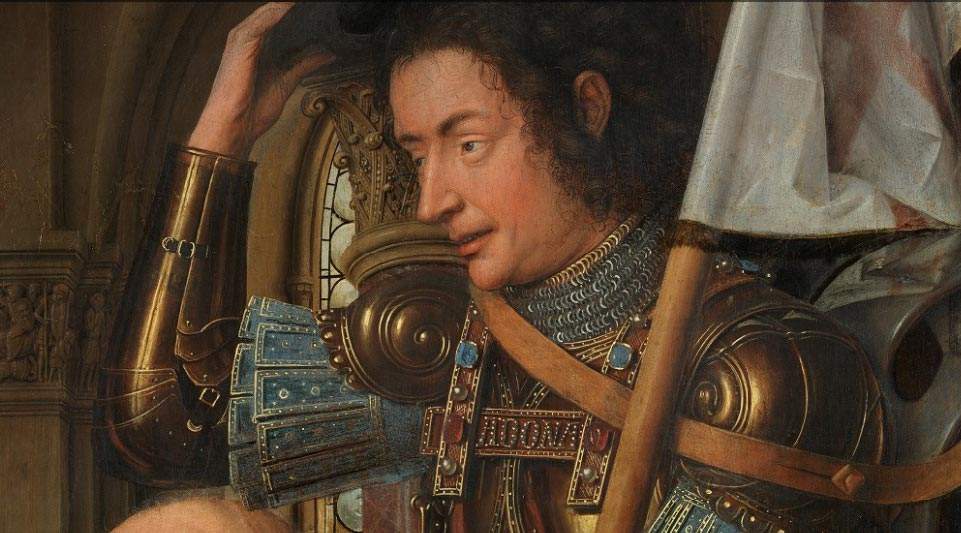 |
| Jan van Eyck, Madonna of Canon Van der Paele, detail with Saint George |
Warning: the translation into English of the original Italian article was created using automatic tools. We undertake to review all articles, but we do not guarantee the total absence of inaccuracies in the translation due to the program. You can find the original by clicking on the ITA button. If you find any mistake,please contact us.





























